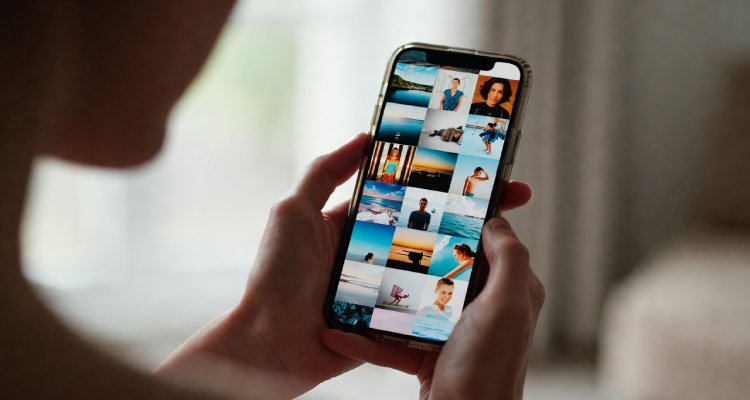Aesthetic Exhaustion: When Chasing Trends Becomes a Lifestyle Disease
The pressure to stay “on trend” has reached epidemic levels, leading to aesthetic exhaustion. Here’s how trend culture is becoming a modern lifestyle disease.
Introduction: The Burnout Behind the Beautiful
It starts with a scroll. A fresh color palette here, a new “clean girl” look there. A kitchen that’s suddenly “wrong” because it’s not Japandi enough. For millions, especially Gen Z and Millennials, chasing aesthetics isn’t just a hobby—it’s a compulsive cycle. Welcome to the era of aesthetic exhaustion, where the pursuit of trendiness becomes emotionally and financially unsustainable.
As algorithms spit out ever-evolving versions of “what’s in,” people find themselves trapped in an unending game of visual one-upmanship. What started as a creative outlet has morphed into a quiet epidemic—affecting mental health, identity, and even environmental sustainability.
Context: From Tumblr Dreams to TikTok Maximalism
The concept of “aesthetic” has exploded in the past decade, evolving from niche Tumblr tags into dominant visual cultures powered by platforms like Instagram, TikTok, and Pinterest. In the 2010s, the rise of minimalism, VSCO girls, cottagecore, Y2K, and dark academia gave users a sense of belonging—until each trend was overexposed, discarded, and replaced by the next.
Apps that thrive on visuals have made style synonymous with identity. Users are no longer just decorating a room or picking an outfit—they’re curating an entire lifestyle. But behind the glossy feed is a dangerous cycle: short-lived dopamine hits, comparison fatigue, and an ever-rising cost of belonging.
Main Developments: When Trends Outpace the People Living Them
The Speed of Change
Aesthetic cycles are now moving at breakneck speed. A style that once took years to evolve is now born, popularized, and declared “cheugy” within months. The trend pipeline—from influencer adoption to mass-market saturation—has shortened drastically.
“This constant turnover is emotionally draining,” says Dr. Mira Patel, a clinical psychologist specializing in digital behavior. “People begin to internalize the idea that if they’re not on top of trends, they’re behind in life.”
Financial and Emotional Toll
Keeping up with trends isn’t cheap—or sustainable. Frequent purchases of “must-have” décor, fashion, or beauty products create a cycle of consumer debt and waste. Meanwhile, people start to question their sense of taste, stability, and even self-worth.
A 2024 survey by Deloitte found that 42% of Gen Z respondents admitted to feeling overwhelmed by trend culture, and nearly a quarter reported going into debt trying to “keep up” aesthetically.
Expert Insight and Public Sentiment
The Rise of “Aesthetic Fatigue”
“Aesthetic exhaustion is the new burnout,” says cultural critic Alina Rodriguez. “We used to talk about emotional labor. Now, it’s visual labor—curating ourselves daily to meet an ever-shifting standard.”
Rodriguez argues that trend culture, accelerated by algorithmic feedback loops, has turned individuals into brands—constantly optimizing, never resting. “And when everything is aesthetic, nothing feels authentic anymore.”
Online Backlash and Micro-Rebellions
In response, micro-movements like “de-influencing” and “anti-aesthetic” content are gaining traction. Creators post unfiltered rooms, mismatched outfits, and content celebrating imperfection. It’s a quiet rebellion—but whether it’s sustainable or just another aesthetic remains to be seen.
TikTok creator @thecozyclutter, whose “ugly but real” series went viral, reflects: “People are tired of always performing. They miss things that feel real—not just Instagrammable.”
Implications: Who Pays the Price?
Mental Health
The psychological cost is high. Chronic comparison, digital perfectionism, and identity diffusion are all rising among social media users. “You’re not just updating your wardrobe—you’re constantly reinventing yourself to remain visible,” says Dr. Patel. “That’s not healthy.”
The Environment
Fast aesthetics breed fast consumption. From discarded fashion hauls to seasonal home décor, the environmental toll is mounting. According to the Ellen MacArthur Foundation, the fashion industry alone contributes 10% of global carbon emissions—much of it driven by trend-chasing behavior.
Cultural Flattening
As aesthetics become commodified, authenticity suffers. Traditional, local, or slow-evolving cultural aesthetics get absorbed and rebranded without context. The result? A homogenized visual culture with no roots and endless churn.
Conclusion: Reclaiming the Real
The aesthetic rat race has reached a tipping point. What began as joyful self-expression is now a relentless cycle that drains time, money, and mental energy. But the tide may be turning.
A growing chorus is asking: Who are we trying to impress, and at what cost? Moving forward, sustainability—in design, consumption, and self-image—may become the new gold standard.
The challenge? Learning to live beyond the feed. Because sometimes, the most revolutionary aesthetic is simply not caring at all.
Disclaimer:This article is for informational purposes only and does not constitute medical or financial advice.











